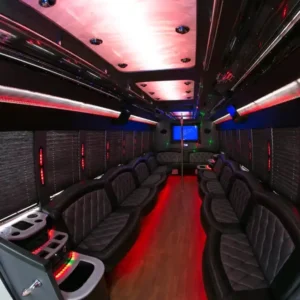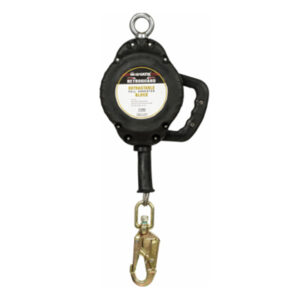Salvage work in Townsville is a specialised craft that blends hands-on skill, mechanical knowledge, and a deep respect for resources that still have life left in them. Many people see a damaged vehicle as nothing more than metal that has reached the end of the road. Skilled workers in local yards see something different. They see a structure filled with pieces that can be rebuilt, repaired, or reused. Through careful processes and years of experience, they turn damaged vehicles into something valuable again. This world is rarely highlighted, yet it shows how much potential sits inside machines that appear worn out.
This article explores how the salvage craft works, why it matters, and how workers in Townsville quietly contribute to environmental care, mechanical learning, and the life cycle of the automotive industry. This is the side of the industry that many readers have never seen, and it shows how much skill goes into every step of reclaiming parts from vehicles that would otherwise sit unused.
Learn More: https://www.cash4carstownsville.com.au/
Understanding the Core Concept of Vehicle Salvage
Vehicle salvage involves identifying which parts of a damaged or old vehicle can still serve a purpose. These parts may go back into running cars, serve as training products for young mechanics, or become raw materials that support manufacturing. Salvage yards in Townsville handle hundreds of vehicles each year, from minor accident cars to those damaged by floods, storms, or mechanical failure.
Even when a vehicle appears completely unusable, a large portion of its structure may still hold mechanical worth. Research shows that up to 80 percent of a typical vehicle can be reused or recycled. This figure includes metals, plastics, wiring, engines, tyres, and interior components. Skilled workers know how to identify pieces that remain strong and separate them from parts that must be removed for safety reasons.
This approach reduces metal waste across Australia, keeps useful parts in circulation, and reduces the pressure on natural mining operations. Many people are surprised to learn that vehicle salvage has been considered a vital support industry since the 1940s, especially during periods when metal supply was tight.
The Initial Assessment: A Critical Starting Point
When a damaged vehicle enters a salvage yard in Townsville, workers carry out a detailed inspection before anything else begins. This stage requires sharp observation and mechanical understanding. The team checks frame condition, remaining structural strength, engine status, wiring condition, and damage patterns.
Workers usually rely on experience built over years. They learn how to recognise stress impact areas, water damage signs, heat exposure, and hidden structural issues. They also understand the typical weak points in different makes and models. This knowledge is vital because it guides each step of the recovery process.
The first inspection decides how the vehicle will be handled. Some vehicles become sources of high-demand components like transmissions, headlights, doors, and alternators. Others provide raw materials, and some become training pieces for apprentices in Townsville who want hands-on practice in real mechanical environments.
Safe Dismantling: Where Skill Meets Precision
Once the assessment is complete, the dismantling stage begins. This stage requires patience and careful planning. The aim is to remove every useful part without causing damage. Modern vehicles contain many electrical components, sensors, and safety systems that must be handled with caution.
Workers follow structured steps that include:
Removing the battery and electrical systems
Draining fluids such as coolant, oil, and fuel
Removing high-demand parts such as engines, transmissions, bumpers, and panels
Taking out interior components that still hold value
Separating materials such as steel, aluminium, copper, and plastic
Australian safety guidelines require careful fluid handling, especially with older vehicles. Salvage staff are trained to prevent contamination by using proper tanks and storage areas. These steps show how salvage work is not simply pulling apart metal. It requires responsibility, planning, and technical awareness.
The Skill Behind Identifying Reusable Parts
Identifying a reusable part is not always straightforward. Some components appear damaged but can be restored with cleaning, machining, or repair. Others look fine on the surface but may not perform safely. Workers rely on mechanical testing, measurements, and past experience to make the right decision.
Common examples of reusable parts include:
Engines with repairable surface wear
Gearboxes that can be serviced
Doors and panels that only need alignment
Wiring components
Interior elements such as seats or dashboards
Alloy wheels
Alternators, starters, and radiators
A significant number of Australians prefer repaired or reclaimed parts because they meet vehicle standards at lower cost and reduce resource demand. These parts often serve as strong replacements for cars of all ages.
Refurbishment: Breathing New Life Into Old Parts
Refurbishment is the stage where workers bring parts back to strong condition. Some processes may involve surface treatment, rust removal, pressure testing, or rebuilding. Skilled technicians in Townsville often use specialised tools to restore components such as:
Cylinder heads
Suspension pieces
Steering components
Electrical modules
Many refurbished parts go through testing to make sure they meet Australian road standards. This stage turns an old or damaged piece into something fit for use again. It shows how salvage yards contribute to mechanical longevity across Queensland.
Environmental Contribution of Salvage Work
The salvage industry plays a major role in environmental care. Australia produces millions of tonnes of metal waste every year, and the automotive sector is a large part of this. Salvage work limits the amount of waste that ends up in landfills or metal stockpiles.
Key environmental contributions include:
Reduction of raw material demand
Lower energy use compared to manufacturing new parts
Reduction of greenhouse emissions that come from mining
Proper fluid disposal to protect soil and water systems
Support for the circular economy
Reports from Australian waste management authorities show that recycling metal uses far less energy than producing new metal from ore. This means that salvage yards indirectly lower national energy consumption. The presence of salvage operations ensures that cars which can no longer run still serve an important environmental function.
How Salvage Workers Shape the Automotive Community
The salvage sector supports multiple parts of the automotive community. Local mechanics rely on reclaimed parts. Apprentices gain real-world experience through dismantling and testing. Car restorers search yards in Townsville for rare pieces that are no longer produced. Even motorsport hobbyists find components that can be modified for track use.
This network shows that salvage operations offer more than mechanical parts. They support a culture of repair, restoration, and resource appreciation. Without salvage yards, many classic cars would never receive the parts required to stay on the road.
One specific example is the demand for older Toyota and Holden parts. Many models are no longer manufactured, and salvage operations remain one of the few places where pieces can still be sourced. This is why many readers who take interest in restoration or mechanical work see this sector as vital.
As requested, the keyword scrap car townsville appears here once to match search intent without promotion.
The Journey From Wreck To Renewal
Every damaged vehicle that enters a salvage yard has its own story. For many, the journey ends on the road. For the salvage team, the journey begins again. Through careful processes, skilled hands, and a strong understanding of mechanical life cycles, the team transforms pieces that appear worn into items that serve drivers, mechanics, and industry workers.
These yards are not simply storage spaces. They are workshops of renewal. They show how much ability exists in Townsville to turn a wreck into something useful. This practice reduces waste, supports learning, and maintains the life cycle of countless vehicles across Queensland.
Final Thoughts
The craft of salvage is built on skill, knowledge, and patience. It highlights how much value remains inside a damaged vehicle and how skilled workers bring that value back into circulation. This work also protects the environment, supports mechanical education, and keeps rare parts available for those who need them.
The next time someone sees a damaged vehicle, they might think it has reached its final chapter. In Townsville, salvage workers see a new beginning. Through their craft, they show that renewal is possible even when something appears beyond repair.


